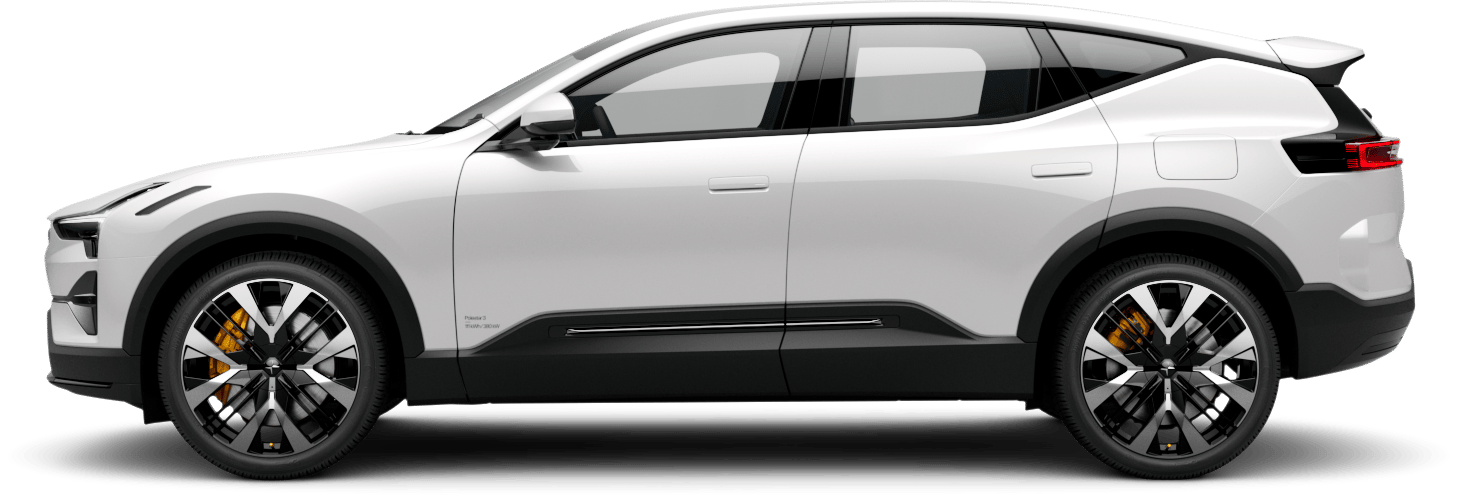The architecture of Space
The automotive showroom has undergone a revolution. The once generic architecture, with its focus on trade and unabashed masculinity, has transformed into something altogether more welcoming. The retail space is no longer designed for number crunching hard sells. Today’s car showrooms are spaces imagined entirely for the purpose of the more elusive yet priceless act of brand building. For Polestar – a marque without heritage, born into the electric age, and operating a digital-first model – the physical retail space plays a pivotal role in introducing, educating, and exciting the public. And so, the concept had to be pitch perfect from the start.

Conversations began sparking up around eight years ago, when Polestar’s CEO, Thomas Ingenlath, and his Brand team started moodboarding and exploring the shape and feel of the retail space. “We concluded that since we are a product-focused brand, everything we do has to be about the product: the design of our cars, performance, and sustainability,” explains Rong Guan, Creative Director for Polestar’s architecture who heads up the design of retail environments. “This then led naturally to environments that are minimalist design so as to be a blank canvas that would focus the attention on our product.” Polestar gave the showrooms the clear name: “Space”. In 2022, the concept picked up “Most Immersive Brand Home” in Wallpaper* Smart Space Awards.
Since the first Polestar Space opened in Gothenburg in 2019, the concept has seen considerable growth with well over 100 specialist showrooms now dotted around key global cities. One of the latest is the UK flagship in Battersea Power Station, which opened two years ago in the London landmark Grade II* listed building, nestled among the colourful boutiques, bars, restaurants, and leisure venues at the building’s core.


Clear direction
In-line with the Polestar Space architecture, the Battersea Space is minimalist in design – the uncluttered interior encouraging visitors to concentrate on the displays and engage with non-commissioned specialists on hand to discuss the cars and their technology. The minimalist Space architecture is also designed to reflect the clear and uncluttered exterior and interior design of all Polestar cars. Guan, who is a trained architect, explains: “Like the cars, the Polestar Space is clean, technical and timeless. We keep only the functions needed to help communicate the product. And we try to avoid ‘lifestyle’ pieces. The focus must be on our products.”
The Space showrooms are positioned within other entertainment and retail environments, but also dotted within museums and galleries. Inside the buildings customers will find materials and colour samples displayed on “Atelier Tables”, which Guan tells me were inspired by what you find in fashion and design studios. Meanwhile, much like a gallery, car parts are exhibited artfully on the walls. And since technology is one of Polestar’s key ingredients, the Space showrooms will often curate exhibitions showing invisible car parts – suspension, brakes, batteries, sound system – as well as elements of the car that are unique to Polestar and worth discussing. “Sometimes we also curate exhibitions of things, design objects and material, that inspire our brand,” says Guan, adding: “It’s about brand building.”










01/05
Like the cars, the Polestar Space is clean, technical and timeless. We keep only the functions needed to help communicate the product.
Naturally for an all-electric car company, sustainability is a critical component to highlight in the Polestar Space. To ensure there is as little waste as possible, the company works with its in-house architects to design the buildings, while a dedicated team sources construction parts locally. Guan is honest when discussing the material choices. “We work with concrete and aluminium, which may not be sustainable in the traditional sense, but are durable and timeless, which means we don’t need to redesign these spaces too often. We also always source our materials locally, and we reduce the wall panels to a few to be more efficient with the build.”
An activation programme is also a key component which Guan would like to evolve as the Space concept finds its footing. She is increasingly seeing the potential of these minimalistic environments for staging creative talks, design exhibitions, and events from outside the Polestar world yet aligned with the brand philosophy. “We encourage local markets to use their Space environments to collaborate with artists and designers. And it doesn’t always have to involve Polestar; sometimes the creatives should use our showrooms as a gallery. This is why our Space architecture is minimalistic, the interior clean and designed to be flexible to activate these collaborations.”
For the complete immersive visitor experience, Polestar has been working with the Swedish composer Lisa Nordström. Her nine-hour soundtrack is composed of ambient soundscapes divided into four tracks that represent the hours of the morning, midday, afternoon, and evening. “Having worked on a campaign for us, around four years ago we began talking to Lisa about the possibilities of the Space soundscape,” recalls Guan. She says they wanted to create a similar atmosphere to when you walk into a gallery, and the quiet invites you to focus on the artwork. “The Polestar soundscape encapsulates our brand beautifully and complements the universe we have created for our customers in our retail locations.”

Meanwhile, supporting the permanent Polestar spaces are a series of imaginative “seasonal” pop-up spaces, mainly collaborative projects with younger designers which subtly speak the language of Polestar. Last winter, for instance, Polestar opened the temporary Snow Space in Finland. This serene structure was made entirely of raw snow harvested in the nearby Ounasvaara Ski Resort and carried to the site in electric trucks. Snow Space opened its ice doors for only seven weeks, after which the snow and ice were returned to its original location, then repurposed as a ski slope in the late autumn before enough snow falls in the area for the season.
Also signifying Polestar’s commitment to the environment is another recent project Koja. Swedish for hut, the treehouse is an invitation to be at one with nature. It hovers above in the woodlands on the edge of Fiskars Village, a thriving art and craft community one hour’s drive west from Helsinki. Designed by master’s degree student of transportation design Kristian Talvitie, this joyous ecological structure received an honourable mention at the 2021 Polestar Design Contest and echoes Polestar’s clean and clear minimalistic design language.








01/04
“Whereas the permanent retail spaces are our main satellites to introduce our company and products to customers around the world, the pop-up temporary spaces are for brand building,” says Guan. “These more experimental projects are important to Polestar as they showcase our nerdiness when it comes to design and detail,” she adds smiling. Polestar, after all, is a design and technology led brand, one which thrives on exploring beyond the conventional. “The temporary spaces can be so much fun because you can try out different ideas,” adds Guan.
I’m curious to see what opportunities Guan and her retail team see for the Polestar Space concept, be it the permanent retail areas or ephemeral structures. “There is so much opportunity, but we need to maintain a solid foundation, keep the architecture and design classic and timeless to be sustainable and reflective of Polestar. Our brand and design teams, retail and events teams work very tightly together to ensure that even though no Space is identical, they convey the same feeling.”
Words by: Nargess Banks









